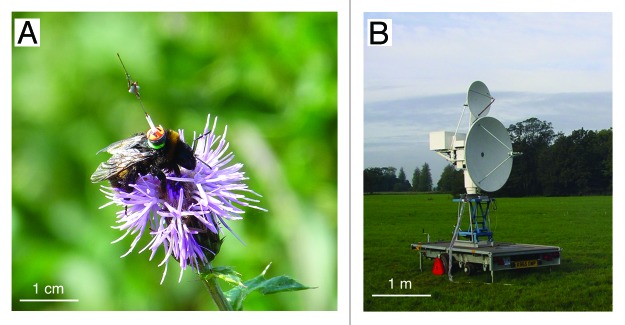
Figure 2. Tracking bees in the field with harmonic radar. (A) A Bumblebee (Bombus terrestris) forager with a radar transponder attached to its back, visiting a thistle flower (Image by Stephan Wolf, with permission). (B) Harmonic radar used to track bees’ flight paths in the field (Image by Oscar Ramos-Rodriguez, with permission). The transponder re-radiates a harmonic of the radar signal which can be detected against a strong ground clutter over a range of about 700 min. Radar tracking of tagged bumblebees visiting artificial flowers arranged in a regular pentagon revealed how bees discover flowers and gradually learn the shortest possible sequence to visit all flowers once and return to the nest (Fig. 3).
